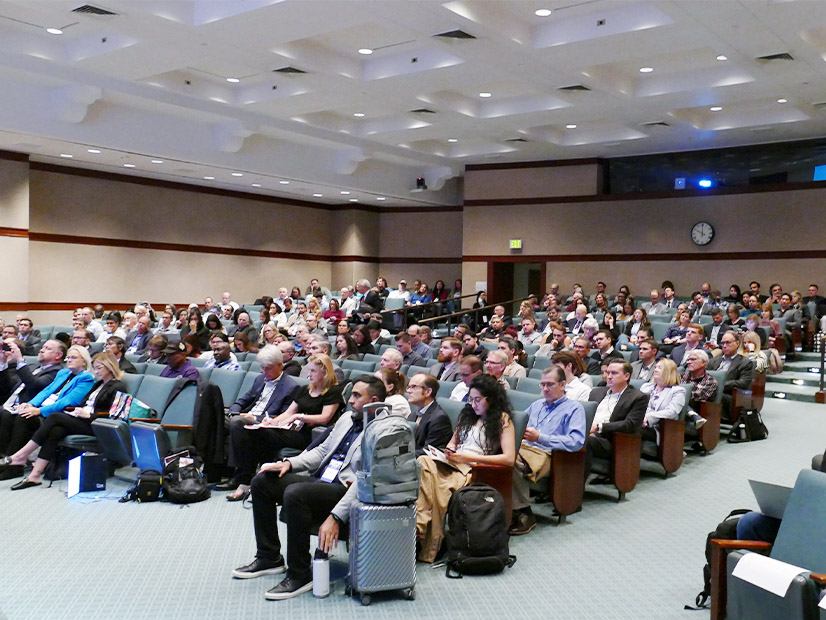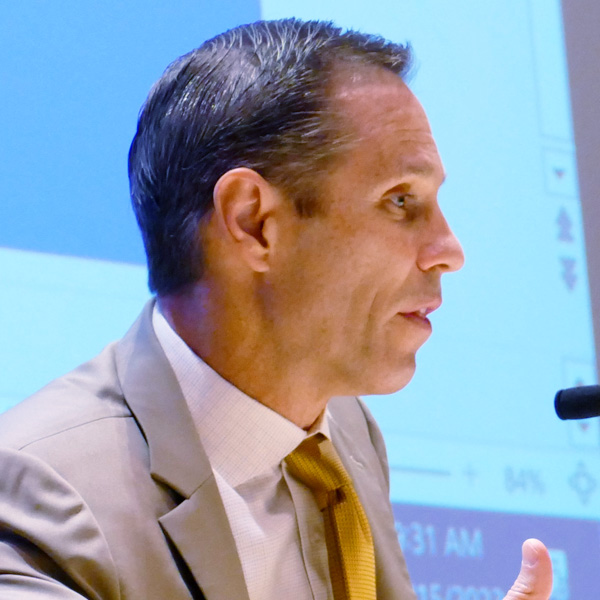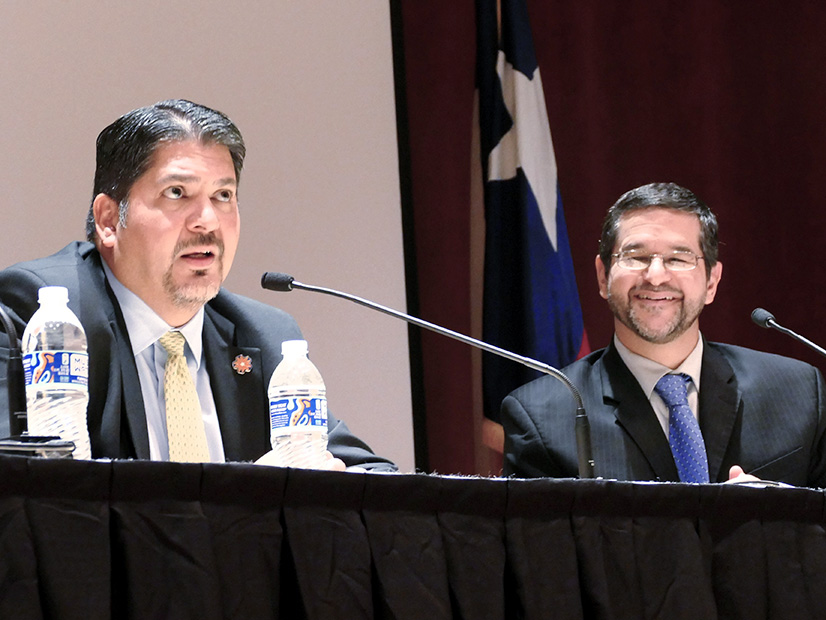AUSTIN, Texas — The 20th Texas Energy Summit, organized by the Texas A&M University System’s Energy Systems Laboratory, again focused on the intersection of air quality and energy, with sessions on energy management, renewable energy, storage, zero-emission fleets, sustainability and resiliency during the Nov. 14-16 event.
Attendees explored policies and programs that improve the environment, advance new technologies, reduce costs and waste, and foster economic development.
Not that Texas needs to foster economic development. It already has the eighth largest economy by GDP in the world ($2.36 trillion), having passed Italy last year. The state’s economy is expected to overtake France’s within the decade, Texas Association of Business CEO Glenn Hamer said.
Texas’ lax regulatory environment and cheap labor have attracted much of that business. That, in turn, has led to a staggering population increase, putting a strain on the state’s infrastructure. Citing employment data from the state and national sources, Texas says it led all 50 states in job creation over the past 12 months, adding more than 391,000 jobs to a workforce that now numbers a record 15.16 million. The 2.9% growth rate is better than the national average of 1.9%.
“Not only do we have, depending on who you talk to, anywhere from 1,000 to 1,200 people moving to Texas every day, but nobody’s bringing water with them or more power,” said Kathleen Jackson, interim chair of the Texas Public Utility Commission.
“Customer demand is increasing very quickly. We’re seeing industrial growth, huge industrial growth,” said Warren Lasher, who opened an eponymous consulting firm when he left ERCOT two years ago.
He chose Samsung’s “monster” $17 billion semiconductor lab being built in Taylor, not far from ERCOT’s lead operations center, as an example of that growth. The 1,200-acre site is twice as large as Samsung’s flagship facility in South Korea.
“And then we’ve got the Tesla [Gigafactory in Austin]. We’ve got LNG facilities being built along the coast. We’ve got industrial growth in the Corpus and Houston ship channel, just between Austin and Dallas. There’s an enormous amount of increased industrial demand data centers. “And then if you look down the road, electric vehicles coming online, potentially hydrogen facilities, more LNG facilities.”
Lasher, who handled system planning for much of his 17 years at ERCOT, said the answer is more transmission.
Jackson chose a different direction, referring to energy efficiency as “the little black dress.”
“It goes with everything,” she said, including manufacturing, residential and small business. “So, as we move forward in Texas, I think we’re very, very well-positioned to be able to do things here that we can’t do anywhere else in the nation or maybe even the world. We’re growing, we have a competitive market that actually promotes innovation. I’m really excited about where we are today.”
An audience member asked Jackson whether Texas would accept federal funding for a rebate program that compensates Texans who retrofit their homes with energy efficient appliances. Florida, a state that, like Texas, is sometimes allergic to the federal government, recently rejected the grant and with it, access to $341 million the Inflation Reduction Act allotted to fund the program.
Jackson paused for a moment before responding to the question.
“I’m advocating for energy efficiency, for demand response and for using the resources that we have,” she said. “There are so many things involved in that particular decision as to whether you [think] that particular financing is appropriate for Texas. In my personal viewpoint, we have many resources here already that we can really pull together and we can use to move forward and make a difference.”
Continued Focus on Gas Resources
Texas politicians have been focused on dispatchable power from thermal resources since the disastrous and deadly February 2021 winter storm, despite the fact those very resources were unable to access fuel during the event and became part of the problem. This year’s legislative session responded with the Texas Energy Fund (TEF), a $7.2 billion low-interest loan program intended for the development of up to 10 GW of natural gas plants that voters approved Nov. 7. (See 2023 Elections Bring Billions for Texas Gas, Dem Wins in Virginia, NJ.)
“There’s a couple of different ways you can approach [dispatchable power]. One is from the demand side and the other is the consumption side,” Democratic State Sen. Nathan Johnson said. “On the demand side, we did what government often does well, sometimes poorly, and that is subsidize.
“The side that was neglected largely, but not completely, was the demand side. The fastest way to have extra power is to not use it, right? Don’t bake cookies at 5:30 when the grid is about to go down,” he said, alluding to the conservation notices that have become a part of ERCOT’s summer operations.
“We got notes and everybody got mad about it, because we’re so used to having a surplus of electricity,” Johnson said.
Asked why energy conservation isn’t one of the tools in the state’s toolkit, he said, “It’s not politically popular. But to think that the solution would be to spend money making systems more efficient or spend money to reward customers for not losing electricity just doesn’t have the same political punch as the other.”
Johnson did manage to add $1B to the TEF bill to set up microgrids at critical facilities, such as hospitals and fire states.
“If the grid goes down, you do not want nursing homes, water towers, water treatment facilities, law enforcement, hospitals, grocery stores, you don’t want those things to be without power,” he said. “We’ve created a plan where we’re going to subsidize the purchase by municipal entities and small private businesses that control vital systems to deploy these backup power systems that will give them power for a couple of days while we fix the grid.”
CPS Puts GRIP Grant to Good Use
CPS Energy CEO Rudy Garza celebrated his utility’s award of a $30 million grant from the U.S. Department of Energy’s Grid Resilience and Innovation Partnerships (GRIP) Program. He said he was proud CPS was the only Texas utility to receive a GRIP grant and one of the largest utility awards nationally. (See DOE Announces $3.46B for Grid Resilience, Improvement Projects.)
“Finding revenue that doesn’t have to come from our ratepayers is really, really important to us,” he said, noting the funds will be used to install batteries and solar panels at substations. Garza said CPS has chosen three substations on the east side of the city “where a lot of our low-moderate income customers are.”
“We’re thinking about underserved communities, we’re thinking about how [energy burdens] customers and how to continue to protect those folks,” Garza said. “We’re going to put this technology there so that in the event that we’re in a load-shed moment, that we’ll be able to keep those particular substations on and learn how to make our systems more resilient. I think we’re going to learn a lot from it and I think it’ll create opportunities for [DOE] going forward.”
He recalled sitting in the DOE offices with San Antonio Mayor Ron Nirenberg and CPS Board of Trustees Chair Janie Martinez Gonzalez. Garza said the trio told the department it was going to improve the substations anyway.
“Partnering with the DOE allows us to bring those costs down and make them more affordable for our customers,” he said. “I think that was a message, quite frankly, that resonated with the Department of Energy.”
Can Transmission ICs Keep Up with Growth?
One thing in Texas’ favor in addressing skyrocketing growth is ERCOT’s ability to quickly interconnect new resources. Whereas the process can take up to 10 years or more in some regions, it can take as little as five or six years in the Lone Star State.
“Unlike other markets, aside from the transmission planning challenges, the interconnection process is tremendously faster and it is also much more [transparent] about when we’re actually going to get online,” Cypress Creek Renewables’ Matthew Crosby said. “We take the risk with [generic transmission constraints] popping up in markets where we might not have anticipated other generation was going to locate, or where load was going to locate. But that’s the risk that we’re willing to take to be able to have more certainty, because that certainty is really valuable for our customers.”
David Treichler, director of strategy and technology for Oncor, said the utility had been spending about $1 billion a year hooking up new customers. Oncor now is adding between 60,000 and 70,000 new meters every year, with costs approaching $3.25 billion when 2023 is up.
“We try to get people connected as quickly as possible, but we’re also trying to identify places where we need to build new transmission that will serve the areas that [renewable developers] are looking at,” he said. “We work very collaboratively with the people who are developing generations to try to make sure that we have the lines in the right place.”



